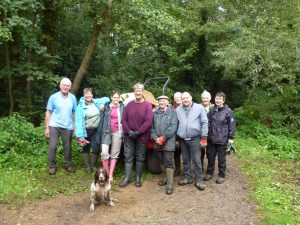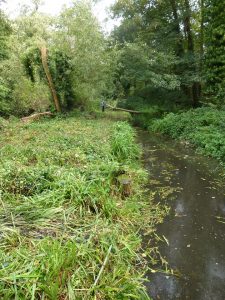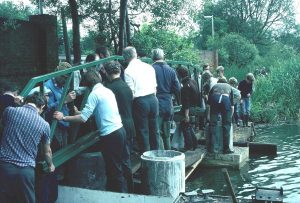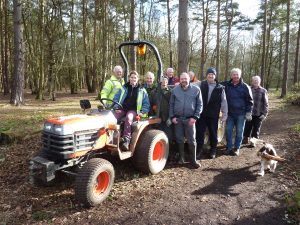 This short film, Brightening the Brookly Stream, shows our volunteers at work with Fleet Pond Ranger Sam, clearing encroaching vegetation from the banks of the Brookly Stream and woods to enable more light to reach the stream bed, promoting greater diversity of aquatic and woodland plants.
This short film, Brightening the Brookly Stream, shows our volunteers at work with Fleet Pond Ranger Sam, clearing encroaching vegetation from the banks of the Brookly Stream and woods to enable more light to reach the stream bed, promoting greater diversity of aquatic and woodland plants.
For much of its course, the Brookly Stream is artificially straight, culverted and heavily shaded. We have an opportunity in the section we help to manage to take steps to encourage the establishment of a range of aquatic plants and to diversify stream flow and depth. Such habitat will benefit a wide range of flora and fauna.





